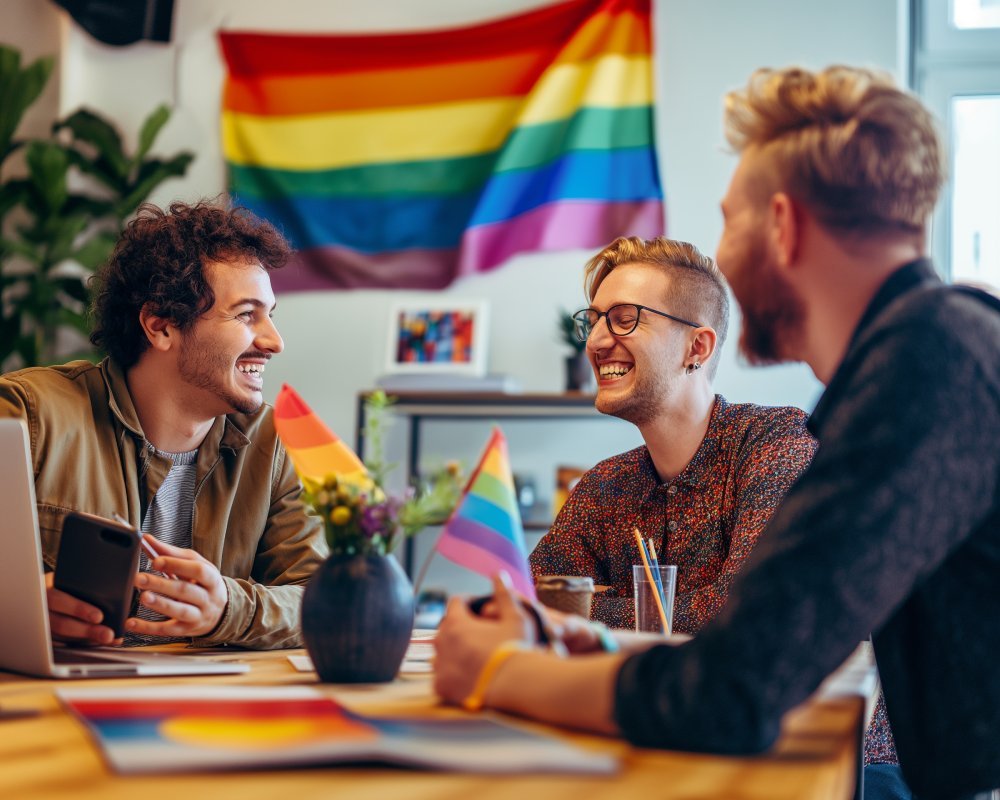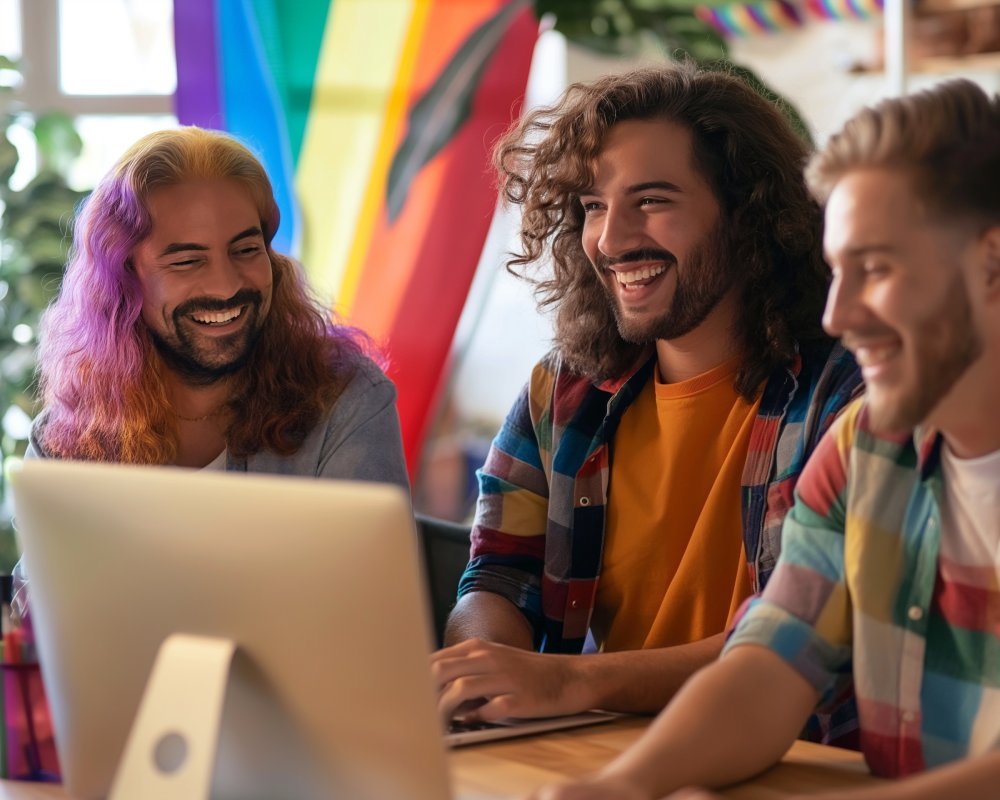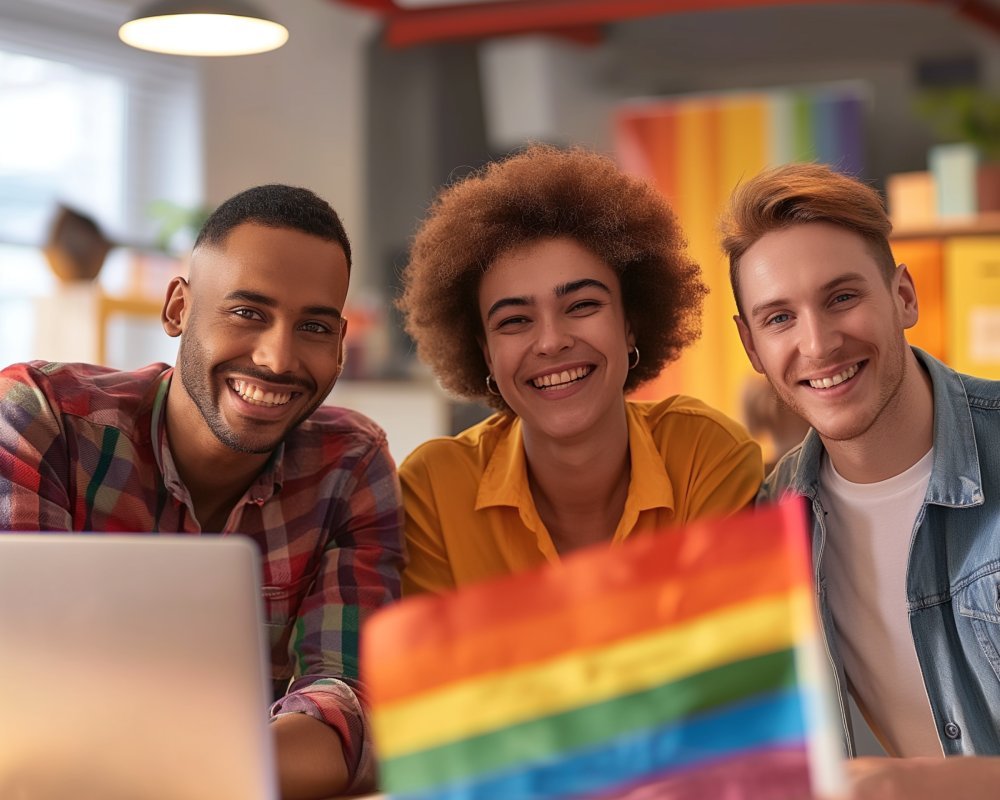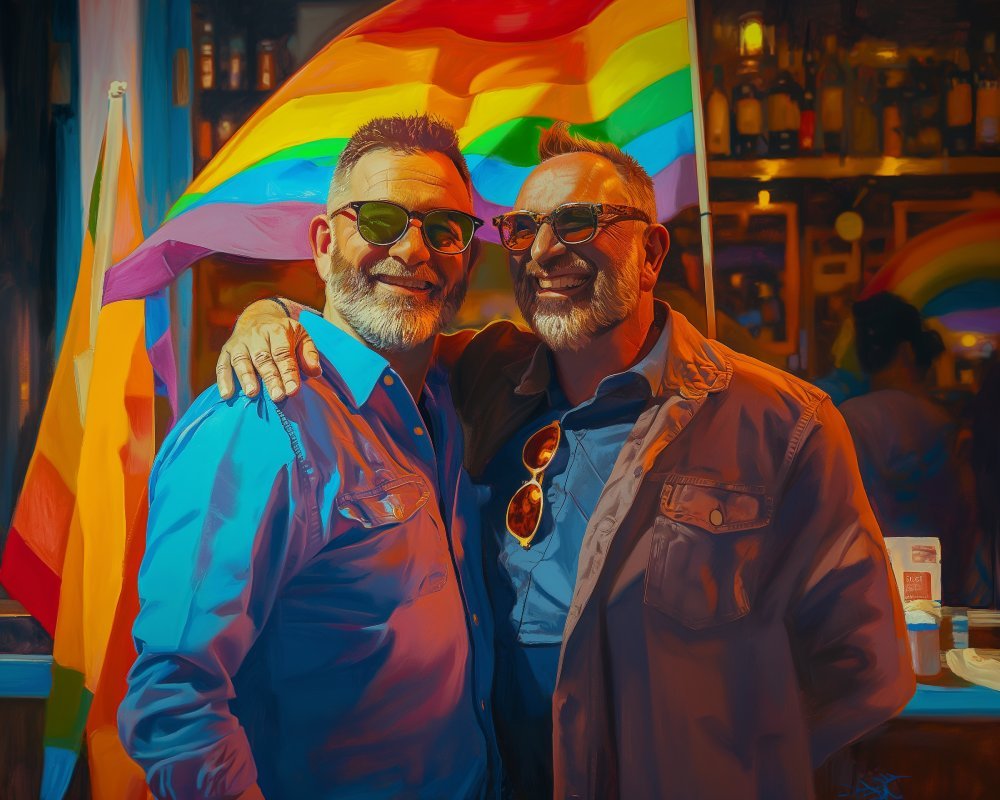
The Gay Adoption Process & How to Start?
1. Introduction – Gay Adoption Process & How to Start?
1.1. Overview of Gay Adoption
Gay adoption is a process whereby gay, lesbian, bisexual, transgender, and queer (LGBTQ+) individuals or couples choose to adopt a child as a way of forming a family. Over the past few decades, the concept of adoption for same-sex couples has evolved dramatically, reflecting broader shifts in societal attitudes, legal frameworks, and cultural representations of love and family. In this guide, we ask, “What Is Gay Love?” and expand further by exploring “What Is Gay Adoption Process & How to Start?”
Gay adoption means more than adding a child to your household—it represents a commitment to building families based on love, inclusivity, and diversity. As debates about marriage equality and LGBTQ rights continue, adopting a child is both a personal journey and a political statement that challenges normative ideas of what a family should look like.
1.2. The Importance of Same-Sex Adoption and LGBT Adoption Rights
Understanding and supporting same-sex adoption is a critical part of the broader fight for LGBTQ rights. When gay couples successfully adopt, it sends a powerful message that love is universal and should not be constrained by outdated norms. Adoption for same-sex couples reaffirms the capacity of LGBTQ+ individuals to nurture, provide stability, and create loving environments for children. This is not merely an act of forming a family—it is also a challenge to long-held stereotypes and prejudices that have marginalized LGBTQ+ people for generations.
1.3. Who This Guide Is For
This guide is intended for:
- Prospective LGBTQ+ adoptive parents: Individuals and couples curious about how to start the adoption process.
- LGBTQ+ community members and allies: Those interested in understanding the legal and social landscape of same-sex adoption.
- Educators, policy advocates, and legal professionals: Anyone seeking a comprehensive overview of the issues around same-sex adoption.
In the following chapters, we’ll navigate the stages of adoption, explore legal nuances across regions, compare gay adoption to heterosexual processes, and provide practical tips to help you start your journey toward building a family. Whether you’re just beginning your research or are ready to dive in, this guide aims to empower you with knowledge, practical advice, and heartfelt inspiration.

2. Understanding the Gay Adoption Process
2.1. What Is the Gay Adoption Process & How to Start?
When approaching the topic of gay adoption, the first question many have is: “What Is Gay Adoption Process & How to Start?” The process can seem overwhelming because it combines aspects of standard adoption procedures with additional considerations specific to same-sex couples. This section explains the overarching framework, from initial research and counseling to legal finalization, so you can begin confidently.
Key components include:
- Initial Research: Learning about agencies, state laws, and available resources.
- Counseling and Home Study: Preparation steps that help ensure you’re ready for adoption.
- Filing the Application: Gathering required documentation and undergoing background checks.
- Matching with a Child: Understanding how waiting times and placements work.
- Legal Finalization: The court process and final adoption order.
- Post-Adoption Support: Resources to help you adjust and build a family in the long term.
The gay adoption process is multifaceted, and each step is critical. By educating yourself early on, you’ll be better equipped to navigate any challenges that arise.
2.2. Definition of Same-Sex Adoption
Same-sex adoption is the process by which same-sex couples adopt a child. In many parts of the world, same-sex couples may choose to adopt jointly as a couple or individually as single gay adoptive parents. The process, while largely similar to heterosexual adoption, may involve additional scrutiny from certain agencies or even state-specific laws that impact eligibility and waiting times.

2.3. Key Terms: LGBT Adoption, Adoption Laws, and More
Understanding some common terminology is essential:
- LGBT Adoption Rights and Laws: Refers to the legal framework governing the rights of lesbian, gay, bisexual, and transgender individuals to adopt children.
- Adoption and Same-Sex Couples: Overview: A general look at how adoption works when applied to LGBTQ+ families.
- Gay Adoption, How Does LGBT Adoption Work?: Answers the procedural questions about how adoption steps are applied specifically to same-sex couples.
- Can Gay Couples Adopt in Your State?: A common query reflecting varied state-by-state laws that can either permit or restrict same-sex adoption.
Grasping these key terms will make it easier to research state statutes and find the right legal resources.
Advertisement · Scroll to continue
Recommended
3. Historical and Legal Background of Same-Sex Adoption
3.1. Adoption and Same-Sex Couples: An Overview
Historically, adoption was envisioned primarily for heterosexual couples. Over time, as LGBTQ+ rights expanded, the conversation shifted to include same-sex couples. The evolution of legal definitions and the growth of advocacy groups transformed public policy and court decisions regarding adoption.
3.2. A Brief History of LGBT Adoption Rights and Laws
- Early Restrictions: Most early adoption laws reflected a heteronormative perspective, effectively barring same-sex couples.
- The Civil Rights Movement: With the rise of the gay liberation movement in the late 1960s and 1970s, activists fought to challenge and change these laws.
- Legal Milestones: Several court cases and legislative changes in the 1990s and 2000s led to gradual acceptance—first regionally, then nationally—in countries like the United States and parts of Europe.
- Current Trends: Today, many Western countries have legalized same-sex adoption, though regional variations persist.
3.3. Same-Sex Adoption in the United States
The status of same-sex adoption in the United States varies widely:
- Progressive States: Many states have legal frameworks protecting same-sex adoption.
- Restrictive Regions: In some states or regions, legal challenges and local policies can slow down or complicate the process.
- Ongoing Battles: Despite federal advances, some states continue to debate and modify laws impacting same-sex couples.
3.4. Same-Sex Adoption in Europe
Europe’s adoption landscape also varies:
- Western and Northern Europe: Countries like the Netherlands, Spain, and Sweden have been pioneers in recognizing same-sex adoption.
- Eastern Europe: Legal recognition lags in many Eastern European countries, where cultural and religious conservatism can hinder adoption rights.
- Comparative Analysis: Understanding these regional differences is crucial for those considering international or cross-border adoption.

4. Steps in the Gay Adoption Process
The adoption process for gay couples follows many of the same steps as other adoptions, though additional challenges may emerge. Below is an outline of key stages:
4.1. Initial Research and Decision-Making
- Understanding Your Options: Begin by researching local adoption agencies, state laws, and online resources that specialize in gay adoption.
- Financial and Emotional Preparedness: Assess your readiness for the financial, emotional, and time commitments required.
- Building a Support Network: Establish connections with other LGBTQ+ adoptive families and advocacy groups.

4.2. Preparing for Adoption: Counseling, Home Study, and Legal Requirements
- Counseling and Education: Many agencies require pre-adoption counseling to ensure you are prepared for the adoption process.
- Home Study Process: A professional evaluator will assess your living environment, background, and readiness to provide a safe home.
- Legal Documentation: Gather all required documentation, including financial statements, medical records, and personal references.
4.3. Application Process: Documentation, Interviews, and Background Checks
- Filing Your Application: Submit your application to the adoption agency along with all necessary documents.
- Interviews and Background Checks: Expect to undergo multiple interviews and comprehensive background checks.
- Waiting Period: Understand that there may be significant waiting periods depending on your state or country.
4.4. Matching with a Child
- Profile Creation: Create a detailed profile showcasing your family’s story, values, and unique attributes.
- Matching Process: Learn about the criteria used by adoption agencies to match prospective parents with children.
- Flexibility and Patience: Be prepared for occasional delays or rejections as the best match is sought.
4.5. Legal Finalization of the Adoption
- Court Hearings: Attend hearings where a judge reviews your case.
- Finalization: Once approved, you will receive a legal adoption decree, which establishes the child as a permanent member of your family.
- Post-Adoption Requirements: Some jurisdictions require follow-up visits or additional counseling sessions.
4.6. Post-Adoption Support and Ongoing Resources
- Parent Support Groups: Engage with other gay adoptive parents for ongoing advice and community support.
- Legal Recourse: Learn your rights if discrimination or legal challenges arise post-adoption.
- Long-Term Planning: Consider educational plans, healthcare, and the ongoing management of your child’s welfare.
5. Navigating State and Regional Differences
5.1. Can Gay Couples Adopt in Your State? – An Overview
The legal ability for gay couples to adopt depends heavily on regional laws:
- State Variances: In the United States, some states offer robust legal protections, while others impose restrictions.
- Adoption Agency Policies: Even within states that legally allow same-sex adoption, individual agencies may have different policies.
- Local Advocacy Groups: Connecting with local advocacy organizations can help you understand the specific landscape in your state.

5.2. Comparing Adoption Laws in the United States
Key factors to consider:
- Marriage Equality and Parental Rights: How state laws support or hinder same-sex couple adoptions.
- Legal Precedents: Landmark court cases that have influenced state adoption policies.
- Timeframes and Waiting Periods: How long the process might take relative to more traditional heterosexual adoptions.
5.3. The Legal Landscape in Europe
- Progressive European Nations: Examine how countries like Spain, the Netherlands, and Sweden facilitate same-sex adoption.
- Challenges in Eastern Europe: Cultural and political obstacles in countries where progressive policies may be less common.
- Comparing Outcomes: Learn how different European legal systems affect family dynamics and adoption timelines.
5.4. International Adoption Considerations for Gay Couples
- Cross-Border Adoption Issues: Understand the complexities of international adoption if your country of residence has restrictive laws.
- Cultural Sensitivity and Adaptation: How adopting a child from a different cultural background might shape your family life.
- Legal Assistance: The importance of securing legal counsel experienced in international and same-sex adoption law.

Advertisement · Scroll to continue
Recommended
6. How Are Gay Couples Adopting? Practical Approaches and Considerations
6.1. Differences in the Adoption Process for Gay, Lesbian, and Heterosexual Parents
Though many steps in the adoption process are similar, there are unique aspects for same-sex couples:
- Additional Scrutiny: Some agencies may require additional documentation or interviews to ensure preparedness in a sometimes-hostile environment.
- Community Networks: Many gay couples rely on LGBTQ+ support groups to navigate challenges.
- Comparative Data: Research suggests that in many regions, the waiting period for gay couples may differ from that for heterosexual couples due to both legal and societal biases.
6.2. Expected Timeframes During the Adoption Process
Understanding timelines is crucial:
- Average Duration: In many states, the process can take anywhere from 1 to 3 years.
- Factors Influencing Time: Bureaucratic delays, state laws, agency workload, and the availability of children for adoption.
- Comparative Statistics: Some studies indicate that lesbian couples may experience different timelines than gay male couples, often related to the specifics of local policy and agency practices.
6.3. Financial, Social, and Emotional Considerations
- Costs Involved: Adoption can be expensive. Expect fees related to home studies, legal work, and agency charges.
- Social Pressures: Gay couples may experience additional social pressures or scrutiny.
- Emotional Readiness: Preparing for the emotional responsibilities of parenting, including potentially challenging conversations with extended family or communities.

6.4. Resources for Gay Adoption: How Does LGBT Adoption Work?
- Organizations and Agencies: Listings of adoption agencies that specialize in same-sex adoption.
- Legal Aid and Advocacy: Resources to help you navigate state and international laws.
- Support Networks: Online communities, local support groups, and counseling services tailored for LGBTQ+ adoptive parents.
7. Challenges and Opportunities in Gay Adoption
7.1. Social Stigma and Internalized Prejudices
Gay couples face external prejudice that may affect their adoption process:
- Stigma Impact: Negative societal views can affect how agencies, courts, or communities perceive same-sex couples.
- Internalized Bias: Past experiences with discrimination may impact self-confidence and decision-making.
- Strategies: Education, community support, and legal recourse play crucial roles in addressing stigma.
7.2. Legal and Bureaucratic Barriers
Even with progressive laws, bureaucratic challenges remain:
- Variations in Law: Discrepancies from state to state and country to country.
- Agency Discretion: Some adoption agencies may impose extra criteria on same-sex couples.
- Legal Support: The role of experienced family law attorneys and advocacy organizations in easing these hurdles.
7.3. Overcoming Obstacles: Success Stories and Best Practices
Highlight inspiring stories from gay adoptive parents:
- Real-Life Accounts: Interviews and testimonials from couples who overcame barriers.
- Tips for Success: Concrete advice, such as preparing robust documentation and networking with supportive communities.
- Ongoing Support: Continued resources, mentorship programs, and counseling options after adoption.
7.4. Table C: 10 Ways Gay Men’s Relationships (and Family Life) Differ From Heterosexual Adoption Experiences
| Aspect | Gay Adoption Experience | Heterosexual Adoption Experience |
|---|---|---|
| Legal Scrutiny | Often faces additional reviews and questions about readiness in a sometimes-hostile legal environment. | Generally seen as the norm, with fewer additional inquiries. |
| Community Networks | Extensive use of LGBTQ+ support groups, mentorship, and advocacy organizations. | More common reliance on traditional family support structures. |
| Disclosure and Public Image | May involve explaining the process to families and communities that are less familiar with same-sex adoption. | Often well understood, with less public controversy. |
| Emotional Preparedness | Navigating additional layers of social stigma requires robust emotional resilience and mutual support. | Although challenging, typically does not include the added burden of fighting pervasive social prejudice. |
| Timeline Variability | Some evidence suggests waiting times may be longer in states with restrictive policies or in conservative regions. | Generally follows more streamlined processes in regions with established legal frameworks. |
| Financial Costs | Costs are similar, but additional legal fees or travel for international adoption may be higher for gay couples. | Average costs apply consistently with fewer additional legal barriers to overcome. |

8. Exploring Same-Sex Adoption in Different Regions
8.1. Same-Sex Adoption in the United States
- Overview:
Same-sex adoption in the United States has evolved significantly over the past few decades. With marriage equality established federally, many states now provide equal adoption rights. However, challenges persist in certain regions where local laws or cultural attitudes may still cause delays or discrimination. - Key Considerations:
- State Laws: Understand the specific legal environment in your state.
- Process Duration: Timeframes can vary widely by state—some states may have streamlined processes, while others impose additional requirements.
- Support Networks: Leverage local LGBTQ+ advocacy groups for guidance.

8.2. Same-Sex Adoption in Europe
- Overview:
Europe offers a mixed picture—while Western and Northern European countries such as the Netherlands, Sweden, and Spain have progressive policies on same-sex adoption, Eastern and Southern Europe may lag behind due to cultural and political differences. - Key Considerations:
- Comparative Legal Frameworks: Some countries have clear, supportive legislation, while others leave adoption decisions to regional authorities.
- Cultural Norms: Social acceptance varies by country, which can affect both the application process and the everyday lives of adoptive families.
8.3. Can Gay Couples Adopt in Your State?
A common query is: “Can Gay Couples Adopt in Your State?”
- Research Tools: Use online databases, advocacy websites, and local LGBTQ+ centers to identify your state’s policies.
- Legal Challenges: Even in states where adoption is legal, there may be additional challenges or waiting periods.
- State Variability: Some states have protections enshrined by law, while others continue to battle discriminatory practices.
9. How to Start the Gay Adoption Process
9.1. Initial Steps and Resources
When you’re ready to begin:
- Gather Information: Research reputable adoption agencies that specialize in same-sex adoptions.
- Consult Professionals: Speak with adoption counselors and legal experts familiar with LGBT adoption rights and laws.
- Join Forums: Engage in online communities and local support groups to share experiences and advice.
9.2. Creating a Strong Application
- Documentation: Prepare financial records, personal references, and background checks.
- Home Study Preparation: Understand that the home study process is rigorous and designed to ensure a safe environment for the child.
- Personal Narrative: Craft a heartfelt narrative explaining why you wish to adopt and how your life experiences inform your readiness for parenthood.
9.3. Resources and Support Groups
Leverage various online and community resources:
- LGBTQ Adoption Networks: Websites and forums dedicated to gay adoption can provide firsthand advice.
- Legal Aid Organizations: Find local legal resources specializing in adoption rights.
- Counseling Services: Pre-adoption counseling can help couples prepare for the emotional journey ahead.
9.4. Table D: Key Resources for Gay Adoption (U.S. and Europe)
| Resource Type | Description | Examples / Websites |
|---|---|---|
| Adoption Agencies | Organizations that specialize in same-sex adoptions and provide end-to-end services. | Family Equality Council, LGBTQ+ Adoption Network |
| Legal Resources | Organizations that offer legal assistance with adoption law and rights. | Lambda Legal, American Civil Liberties Union (ACLU) Adoption Project |
| Support Groups and Forums | Online communities and local meetup groups for adoptive parents. | Adoptive Families Online, Meetup groups for LGBTQ adoptive parents |
| Counseling and Education | Pre-adoption counseling and educational resources for prospective LGBT parents. | Local LGBTQ+ centers, Therapy Assistance Programs |

10. The Future of Same-Sex Adoption and LGBT Family Building

10.1. Ongoing Legal and Policy Developments
- Advocacy Successes:
Marriage equality and increased legal recognition for same-sex couples have paved the way for smoother adoption processes. - Ongoing Battles:
Despite progress, some states and countries still lag behind. Advocacy organizations continue to lobby for comprehensive LGBT adoption rights and protections. - Policy Trends:
Look for trends in reform, from improved home study practices to streamlined legal procedures, and increased funding for LGBTQ+ family support services.
10.2. Impact of Technology and Online Communities
- Digital Platforms:
Apps and websites, including adoption forums, dating platforms for adoptive parents, and social media advocacy groups, are transforming how gay couples connect with agencies and information. - Virtual Support:
Online counseling and mentorship programs offer immediate support to those navigating the adoption process. - Crowdsourcing Knowledge:
Digital platforms allow prospective parents to share advice, document their journeys, and collectively advocate for change.
10.3. Building a World of Inclusive Families
The future of gay adoption is intertwined with broader social acceptance:
- Inclusive Narratives:
Increased positive media representation of LGBTQ+ families fosters a culture that celebrates diverse forms of love and care. - Educational Outreach:
Comprehensive school curricula that include LGBTQ+ topics help reduce stigma, creating a more welcoming environment for future families. - Community Empowerment:
As local communities become more accepting, the barriers to adoption lower, allowing more LGBTQ+ families to form and thrive.
11. Conclusion
11.1. Recap of Key Points
This guide has explored:
- What Is Gay Adoption Process & How to Start? from initial research to legal finalization.
- A historical and legal overview of same-sex adoption in the United States, Europe, and worldwide.
- Detailed steps in preparing for and navigating the adoption journey.
- Practical advice on building a supportive network, creating a strong application, and understanding state-specific challenges.
- Comparisons between gay, lesbian, and heterosexual adoption experiences, including unique considerations in legal timelines and societal expectations.
- Future trends and ongoing efforts to create a more inclusive world for same-sex parents.
11.2. A Call to Action for Prospective Adoptive Parents
For those ready to embark on the gay adoption process:
- Educate Yourself: Leverage the resources provided, join support groups, and stay updated on legal changes.
- Seek Expert Guidance: Contact reputable adoption agencies and legal professionals well-versed in LGBTQ+ adoption rights.
- Build Community: Network with other same-sex adoptive families to share experiences and gain support.
- Advocate: If you encounter discrimination or legal hurdles, join advocacy efforts to promote wider adoption rights and reform outdated policies.
11.3. Final Thoughts
What is gay love? For many, it is a transformative, resilient bond forged in the face of adversity. What is gay adoption? It is a journey that begins with the desire to create a family and is enriched by the challenges and triumphs of navigating legal, social, and emotional landscapes. Whether you are a prospective parent, an ally, or simply someone interested in understanding the unique facets of LGBTQ+ family building, we hope this guide inspires you to embrace the possibilities.
In the end, adoption is not just a bureaucratic process—it’s a bold statement of love, acceptance, and hope for a future in which every child and every family, regardless of orientation, is valued and celebrated. May this guide provide you with the practical steps, historical context, and emotional encouragement to start your journey toward building a loving, inclusive family.
Advertisement · Scroll to continue

More Recommended
Top 33 U-Haul Lesbian Jokes: Funny Lesbian Moving-In Moments
Top 33 U-Haul Lesbian Jokes: The Funniest Lesbian Moving-In Moments 🛻🏳️🌈 -Laugh out loud with the [...]
Top LGBTQ+ Friendly Camping Spots
Top LGBTQ+ Friendly Camping Spots – The desire to explore nature is universal, and camping [...]
How Lesbian Entrepreneurs are Championing Diversity in Business
How Lesbian Entrepreneurs are Championing Diversity in Business Lesbian entrepreneurs have been making significant strides [...]
How Lesbian-Owned Businesses Are Shaping the Market
How Lesbian-Owned Businesses Are Shaping the Market In today’s rapidly evolving market, the influence of [...]
How to Deal With Homophobia as a Gay Teen
How to Deal With Homophobia as a Gay Teen – Navigating the tumultuous journey of [...]
How to fix discrimination?
How to fix discrimination? – Gay Thrive LGBTQ+ Marketing Agency is committed to creating a [...]
Who is the biggest benefactor of the DEI?
Who is the biggest benefactor of the DEI? – Diversity, Equity, and Inclusion (DEI) are [...]
Why Is There Still Discrimination Against Gays?
Why Is There Still Discrimination Against Gays? – The LGBTQ+ community has long been a [...]
Behind the Rainbow Flag: The Business of LGBTQ+ Advertising
Introduction: The Evolution of LGBTQ+ Marketing Behind the Rainbow Flag: The Business of LGBTQ+ Advertising [...]